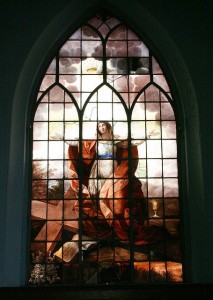Stained glass rules put the hurt on churches
Stained glass regulations expected soon
New EPA rules are being finalized that would directly affect the manufacturers of stained glass. These new rules would require the use of expensive filtration systems for small glass furnaces. The stained glass manufacturing process uses lead, cadmium and other toxic heavy metals that are discharged into the air around the furnaces.
The EPA has become alarmed by the quantity of these toxins that are accumulating in areas around glass plants that do not have filtration systems. Current rules require furnaces that run 24/7 to filter their emissions for the toxic metals. At the same time, the rules allow small furnaces to skip the filtration systems. If the new rules are adopted, however, firms that produce 50 tons or more of glass would need to install the filtration systems, regardless of how often their furnaces run. Filters must recapture 99% of the offending toxins.
Small furnaces – those that typically run without filtration – must abide by temporary production limitations imposed by the EPA. When the rules are finalized, art shops, artists and customers fear that they can not get stained glass, or that they’ll need to purchase imported stained glass at a higher cost.
An alternative to stained glass is painted glass. Glassprimer™ glass paint makes a permanent bond with the glass surface, and will not delaminate, fade or chip, even when exposed to direct sunlight. The paint can be applied in thin layers to control the flow of light through the glass. The paint costs about $1 per square foot, and can be matched to any paint palette from any major paint manufacturer. The paint is easy to clean, low-odor and comes in a water-based alternate formulation.
If you’d like more information about Glassprimer™ glass paint, please visit the rest of our site. If you’d like to purchase Glassprimer™ glass paint, please visit our online store .
Photo Credit: Andrew Fogg, via Flickr.com

